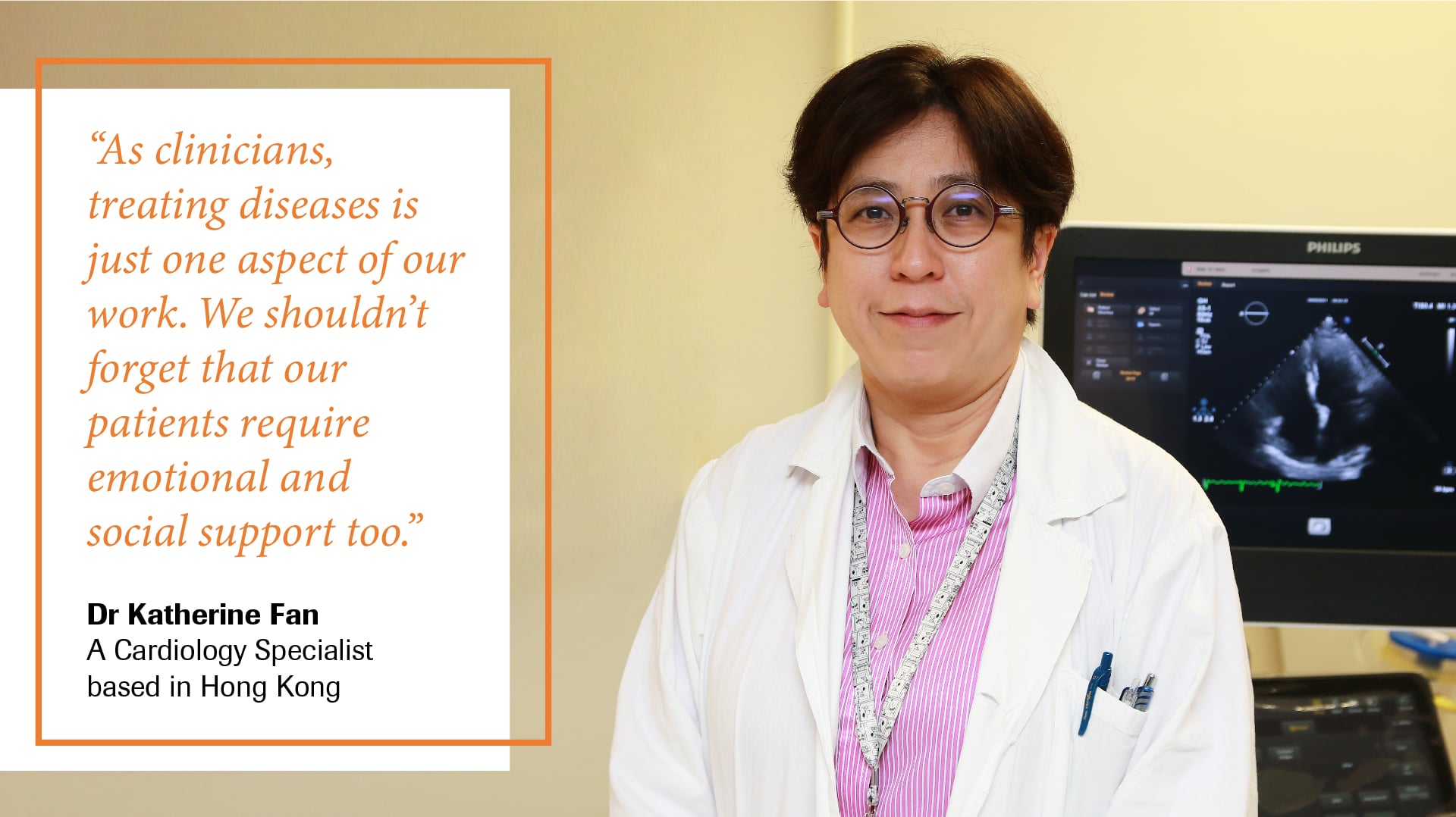The facts are stark. COVID-19 might be rampaging across cities and headlines, but cardiovascular disease (CVD) remains the leading cause of death globally, with an estimated 17.9 million people dying from CVDs in 2019.1
The situation in Hong Kong is similar. In 2017, one in five deaths here was due to CVD.2 Working in a tertiary referral hospital for heart transplantations, I have encountered many patients suffering from end-stage heart failure, often a result of the delay in diagnosis and treatment.
It is shocking to me that, despite the current advances in medical technology and innovations in the quality of patient care provided in Hong Kong, we are experiencing an endemic of such with regards to heart failure disease.
Related read: From Cardiologist to Patient
The Heart of the Matter
This motivated me to get to the root of the problem — a lack of connectivity between awareness, prevention, heart failure diagnosis, and follow-up care. I wanted to see what I can do for these patients who have very little hope of receiving a heart transplant in their lifetime due to the limited number of organ donations available.
Contrary to popular belief, the average age of patients referred to us for heart transplants are in their mid-forties. They are relatively young. Usually, these are patients who were diagnosed with dilated cardiomyopathy in their 20s and 30s but, thanks to treatments such as percutaneous coronary intervention, they survived their heart attacks — only to fail to control their symptoms of heart failure as time went on, perhaps due to a lack of support in aftercare and disease management. The damage done to their heart is irreversible, and ultimately with failed medical therapy, a heart transplant is their last resort. Heart failure is the “final destination” for a lot of cardiovascular diseases.

Related read: Setting Sight on Breakthrough Diagnostics
Patient-centric Continuity of Care
To mitigate this, healthcare delivery should be present at every stage of the patient journey: from prevention to diagnosis, treatment to after-care. Most heart failure patients are diagnosed only after landing themselves in the Accident & Emergency department of the hospital. After admission, their symptoms are brought under control however, because of extreme workload and manpower constraints, there isn’t a sustainable continuum of care provided to them. They are sent home once their condition has stabilised but often regress — which means they get sent back to the hospital again. In fact, studies show up to 25 percent of patients can often return within a month.3 We know by now that each subsequent heart failure admission worsens their prognosis. Therefore, we need to improve post-discharge care management and try to avoid preventable hospital readmissions. Incorporating biomarkers for the diagnosis of heart failure can greatly aid our efforts.
For example, echocardiograms strengthen our diagnostic capabilities so that we can identify patients who are more susceptible to the disease such as those with existing comorbidities like diabetes and kidney disease. If these patients are assigned risk scores for risk stratification, clinicians can concentrate on those who most need our attention. A large proportion of patients with coronary heart disease, the second leading cause of death in Hong Kong,4 are unaware of their condition and therefore are undiagnosed. Imagine how many deaths we could prevent, while lessening the burden on our health systems, if we began to really invest in the pre-diagnostics space.
What really keeps me going as a healthcare professional is seeing my patients get back on their feet and enjoy an improved quality of life after treatment. Knowing that I’m part of the reason that they get to resume their favourite activities or spend time with their family again motivates me to spend all my energy and effort on improving heart failure management, especially in providing holistic patient care. As clinicians, treating diseases is just one aspect of our work. We shouldn’t forget that our patients require emotional and social support too.
Cardiac Patient Management of the Future
Without a doubt, COVID-19 has made our management of CVD more challenging. Patients are more reluctant to seek help even if they are experiencing symptoms like chest pains as they are worried about going to the hospital. But as healthcare providers, we must go on. This particular scenario — the pandemic — presented us with an opportunity: to implement and test out the effectiveness of artificial intelligence (AI) as well as telemedicine in the management of chronic diseases.
As a tool, AI can potentially expand clinical abilities, help clinicians make more accurate diagnoses, and improve the delivery of care as a whole. Additionally, remote monitoring and telemedicine helps address patients’ fears while enabling treatment to continue without detracting from its effectiveness. While there’ll always be data privacy and cybersecurity issues surrounding the use of technology, its benefits far outweigh the costs. Rather than shying away from adoption, it’s more important that we clarify and address such concerns.

Remaining Positive to Handle What’s Next
Patient response to the use of digital tools has been encouraging — even elderly patients who we initially thought would face the most difficulty adjusting to this new mode of healthcare delivery.
The good news is that the field of heart failure management is evolving — and rapidly. In recent years, we have welcomed new medical and surgical therapies such as valvular intervention and mechanical circulatory support, and diagnostic technologies continue to advance.
As medical practitioners, we ought to constantly stay optimistic, remaining open to new information and excited about new technology that will ultimately improve the lives of our patients.
Related read: Automating the Fight Against Heart Disease with Artificial Intelligence
Diagram Dialogues
Subscribe to our podcast to hear expert insights from the world of diagnostics
References:
1World Health Organization (2021). Cardiovascular Diseases (CVDs). Retrieved from https://www.who.int/news-room/fact-sheets/detail/cardiovascular-diseases-(cvds)
2Centre for Health Protection, Department of Health (2018). Non-communicable Diseases Watch. Retrieved from https://www.chp.gov.hk/files/pdf/ncd_watch_sep_2018.pdf
3Oxford Health Policy Forum (2014). Improving Care For Patients With Acute Heart Failure. Retrieved from https://www.oxfordhealthpolicyforum.org/wp-content/uploads/2020/06/ahf-report.pdf
4Hospital Authority (2013). Strategic Framework for Coronary Heart Disease. Retrieved from https://www.ha.org.hk/ho/corpcomm/Strategic%20Service%20Framework/Coronary%20Heart%20Disease.pdf














